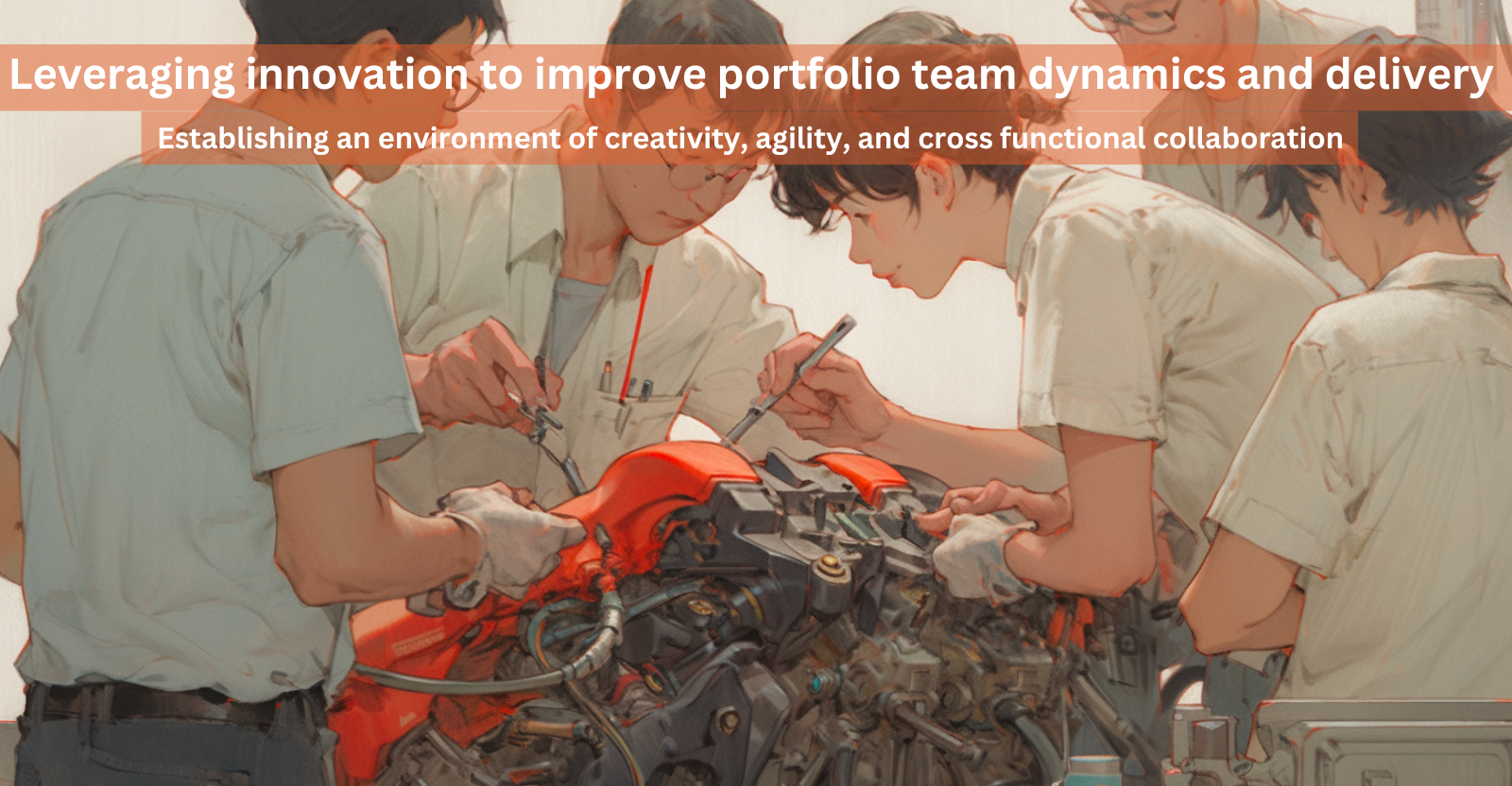Have you ever wondered to yourself how some companies seem to always be on top? It’s not a secret. It’s not just about their science and technology; it’s also about how leaders in pharmaceutical companies make decisions and support their teams. The way a leader guides their team can either speed up or grind drug development to a screeching halt.
The single constant in healthcare, like life itself, is change, so it is vital for these companies to keep coming up with new and improved treatments to meet both this dynamic and the demand. The antidote? In a word, Innovation! A McKinsey study found something surprising: most teams working on new ideas only spend about 15% to 20% of their time on actual innovation. And what about the rest of the time you might ask? They’re waiting around for decisions or resources. Understandably, this waiting game isn’t conducive to any part of an innovation protocol. So, what can leaders do to fix this? There are three key moves we would like to suggest:

Let the teams call the shots:
One big problem is that teams often can’t make decisions by themselves, which can logically slow things down a lot. Leaders have an opportunity here to let their teams shine by allowing them to make some ground floor decisions without the need for the green light from above.
For example, a leader might allow a team to spend a small amount of money without needing approval every time. This approach can help teams focus more on innovating rather than getting stuck in red tape. Take Johnson & Johnson, for example. They let their teams make decisions, leading to cool inventions like Band-Aids and Tylenol.

Give them what they need:
This strategy is not just about having enough funding; it’s about creating an environment where innovation can really be launched off the pad by giving your employees and your best talent the right amount of support and resources to do what it is that makes a difference.
A common hurdle in team innovation is the lack of “essential” tools – financial, technological, or human resources. For leaders, ensuring their teams are well-equipped is critical to convert innovative and creative ideas into tangible, market-ready solutions. Allocating a dedicated budget for new ideas is priority one in this step. This financial commitment allows teams to explore, experiment, fail, and ultimately succeed in developing very innovative and new kinds of treatments without having to deal with the handcuffs of limited resources.
Pfizer does an excellent job in exemplifying this approach. They have consistently allocated a considerable amount of their budget to R&D. To be exact, $13.8 billion U.S. dollars, as reported by Statista. This investment adds gas to the flame for their teams to innovate and develop breakthrough drugs, most notably this approached played a relatively crucial role in the fast development and equally fast deployment of the COVID-19 vaccine in partnership with BioNTech, which was one of the first to receive emergency use authorization, as we remember all too well.
Another example is Roche, known for its innovative approach in healthcare. In 2020, Roche invested about 12 billion Swiss francs in R&D, as noted in their Annual Report. This investment has let them be at the forefront when it comes to making medicines and diagnostics. Roche’s focus on “personalized” healthcare and advanced diagnostics is a direct result of this significant investment, which allows them to tailor treatments for individual patients and their needs, and shouldn’t that be what medicine is really about?
When leaders prioritize and provide the necessary resources, especially in the form of a dedicated R&D budget, they give a lot of power to their teams to push the boundaries of what can be accomplished in medical science. This not only leads to creating new and groundbreaking medicines like Pfizer’s Lipitor and Prevnar 13 or Roche’s cancer therapies, but it also cements the company’s position as an industry leader when it comes to innovation. So, for the leaders of pharmaceutical companies aiming to make a significant impact in their fields of healthcare, following the lead of companies like Pfizer and Roche can be a great way in achieving their own degree of success.

Build a culture that loves new ideas:
Planting and cultivating a culture that cherishes new ideas is just as important as having the funding and resources. It’s about creating an environment where taking calculated risks and generating new ideas isn’t just accepted, but rather it’s actually celebrated and encouraged. This cultural shift can be a game-changer in accelerating drug innovation.
How can we best nurture this type of environment? Establish dedicated spaces, call them “innovation labs” if you like, where creative thinking becomes the norm and people feel safe to bring forward bold thinking. These labs then serve as incubators for groundbreaking ideas and projects, providing not only the tools, but more importantly, the FREEDOM needed for more out-of-the-box thinking and experimentation.

Merck’s Innovative Approach: A Case Study
Merck has embraced the concept of innovation labs and established an exploratory science center in Cambridge, focusing on early-stage biotech research. The goal of this center, as part of Merck Research Laboratories, is to identify and validate new drug targets using more “innovative” approaches from the lab to address many different therapeutic areas. The center’s unique environment encourages and fosters collaboration among its scientists, allowing them to push the boundaries of the status quo and what we have come to understand as “traditional” in pharma research.
The proof is in the pudding as Merck’s pipeline of innovative drugs is one of the most robust in the industry. For instance, their commitment to R&D in oncology led to the breakthrough of pembrolizumab (Keytruda), an immunotherapy drug that has transformed the treatment of various cancers. Keytruda’s interesting development and subsequent success underscore the value of both the need for collaboration and an innovation-driven culture.

In a Nutshell:
We are fortunate to experience the evolution happening right now in both technology and healthcare, which are advancing and evolving at a rate faster than we can keep up at times. Things change and update before we even have a chance to know what we missed out on. However, in the Pharma industry, the leaders of tomorrow who will make the news must stay ahead of this trend and be on the pulse of what hasn’t even been invented yet. They need to give their innovation teams the freedom to make decisions, provide them with the right tools, and create an environment that encourages and thrives on…scratch that, LOVES new and innovative ideas. By following this philosophy leaders can rise to the challengers facing medicine today and help bring life-changing drugs to the market faster.









